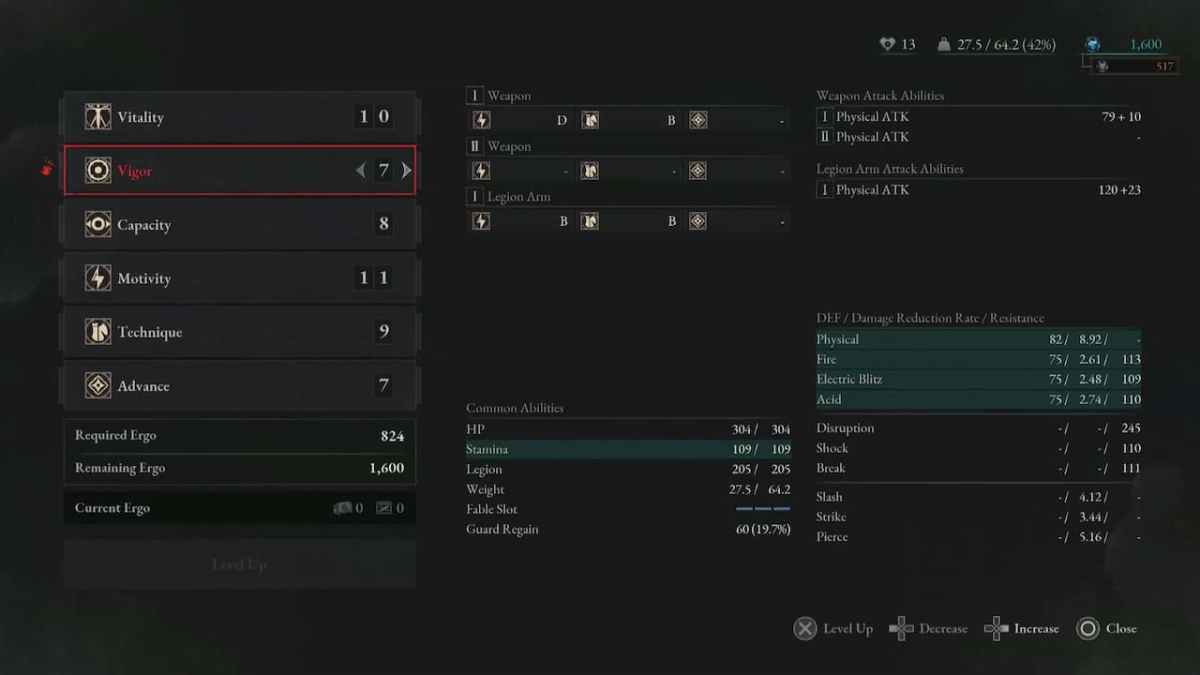Lies of P’s Pinocchio is handy with a sword, and as you progress through the game, you can give his stats a boost. But just how do those stats work and how do they tie into his abiliites? Here are all stats in Lies of P explained.
Here Are All Stats in Lies of P Explained, and How They Work
Like Bloodborne and most other soulslike games, Lies of P’s stats are connected to a range of sub-stats. When you raise one stat, it affects several sub-stats. Here are all the game’s stats and the sub-stats they affect. The sub-stats will vary a little depending on which level you’re at.
Vitality — Vitality is health, and when you raise it it boosts HP, guard regain, and physical, fire, electric and acid resistance.
Vigor — Vigor is essentially how much physical energy you have, and it’s linked to stamina, HP, guard regain, and physical, fire, electric, and acid resistance. Stamina is drained when you attack, run, or do any other…uhh…vigorous movements.
Capacity — Capacity is how much you can can carry, both in terms of inventory and weapons. It affects Legion, weight, and physical, fire, electric, and acid resistance.
Motivity — Motivity is dexterity, dictating how much damage you can do with weapons. It affects your weapon attack abilities and your Legion Arm attack abilities.
Advance — Advance affects your skill with your Legion Arm. It also impacts physical, fire, electric, disruption, shock, break, and acid resistance. It’s a semi-magical/tech skill.

Each sub-skill has its own value, though I’m a big fan of Guard Regain. The more you raise that, the easier it is to get health back when you pull off a non-Perfect Guard. And while it’s tempting to skip over Legion initially, there are some excellent Legion Arms you can get your hands on. One in particular lets you deliver ranged attacks, and when you’ve got that, you won’t regret having put points into Legion.
So, if you wanted Lies of P’s stats explained, that’s what you need to know. For more on the game, check out our Lies of P Review in 3 Minutes.
